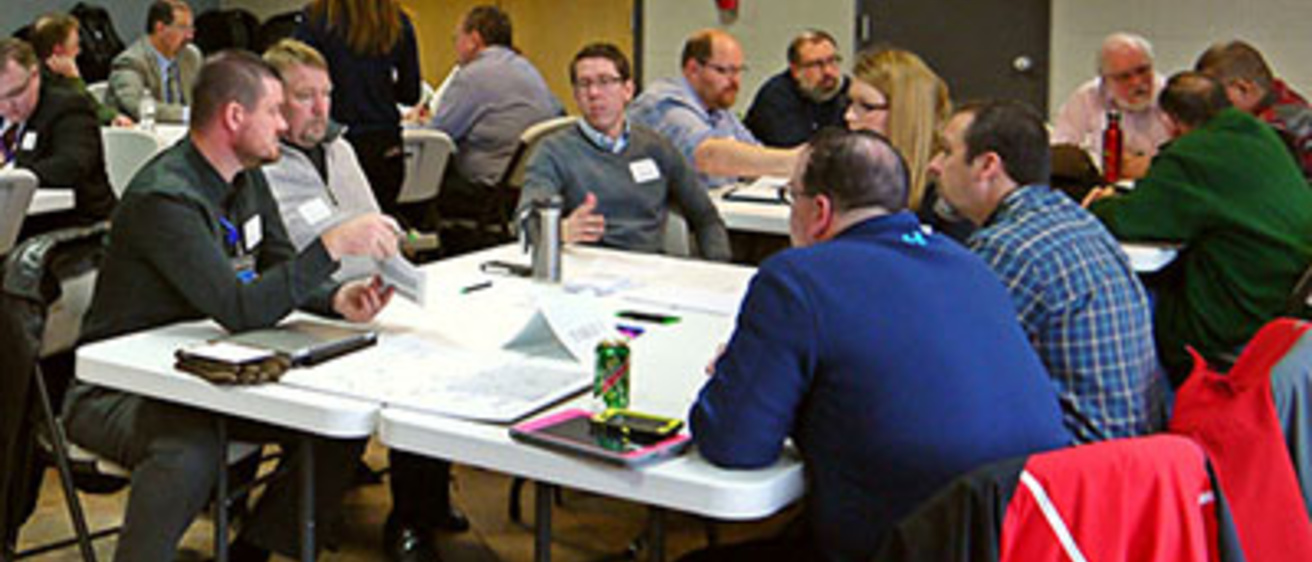When asked what benefitted them most during their time in Iowa City, all students, past and present, in the Urban and Regional Planning (URP) program, will likely respond with a short, sweet answer, "Field Problems." The look in their eyes will express how the process tested their knowledge of planning practices and pushed them to think more creatively and work harder than they ever imagined. However, the gleam in their eyes will convey another story, one of triumph, influence, and pride in the work they accomplished. During the course of the final year of the program, student groups team up with the Iowa Initiative for Sustainable Communities (IISC) to work with cities, counties, and regions all across Iowa in order to tackle planning related issues. Each year teams are distributed across the state. This year the teams were divided between Sioux City, Salix, Decorah, Winneshiek County, and Iowa City.
The project spotlighted in this article took place in the northeast corner of the state, beautiful Winneshiek County. The overarching goal of the project was to develop an expansion plan for a fiber-optic broadband, known as the Decorah MetroNet. Currently, the MetroNet winds its way throughout the city of Decorah, providing lightning fast internet speeds at affordable rates. The MetroNet was created through a public-private partnership, and served the six anchor members at their various locations throughout town.
Having reached their goals of servicing the members of the partnership, the MetroNet Board wanted to think bigger and look into expanding the network. So they approached the School of Urban and Regional Planning and the IISC to examine the intricacies involved with plans to expand the fiber-optic network to include more residents and business. So, why is everyone so interested in fiber? Fiber-optic broadband is internet service delivered using light waves through a glass or plastic tube. Fiber-optic broadband tends to be faster, more reliable, and more affordable than traditional and satellite internet service.
The graduate students working on this project include Qilu Chen, Jeff Gepper, Juliana Lucchesi and Dea Qatipi. They have been working diligently to first collect as much data as possible about the region and its internet usage. Through an extensive survey, the team has been able to analyze the current level of connectivity in the community, as well as the amount of demand for higher quality, more affordable and reliable service. Additionally, the students ventured up to the area for a community visioning session to better understand the area’s opinions on the digital future of Winneshiek County. There has been a thorough analysis of the financial components of the current standing and future opportunities. Various organizational structures and legal barriers were analyzed to ensure a comprehensive and well-researched set of recommendations cane be produced.
At this point in their field problems project the students have been busy investigating the different strategies the MetroNet can employ to effectively and efficiently expand within the county to better serve residents, businesses, and communities alike. Each strategy includes a financial framework, analysis, maps, and a series of implementation procedures. Lastly, the students will leave the MetroNet board with a series of performance measure tactics to assist the group in measuring the networks positive impact on the community.
The team’s work has been selected for a poster presentation by the American Planning Association and will be presented at the annual national conference in Phoenix, AZ on April 4th. The poster has already won acknowledgment by coming in second place in the competition at the Iowa American Planning Association Conference last fall.
In May of this year, the team will present their final recommendations to the MetroNet board and watch as their expansion plan and yearlong efforts come to fruition.
